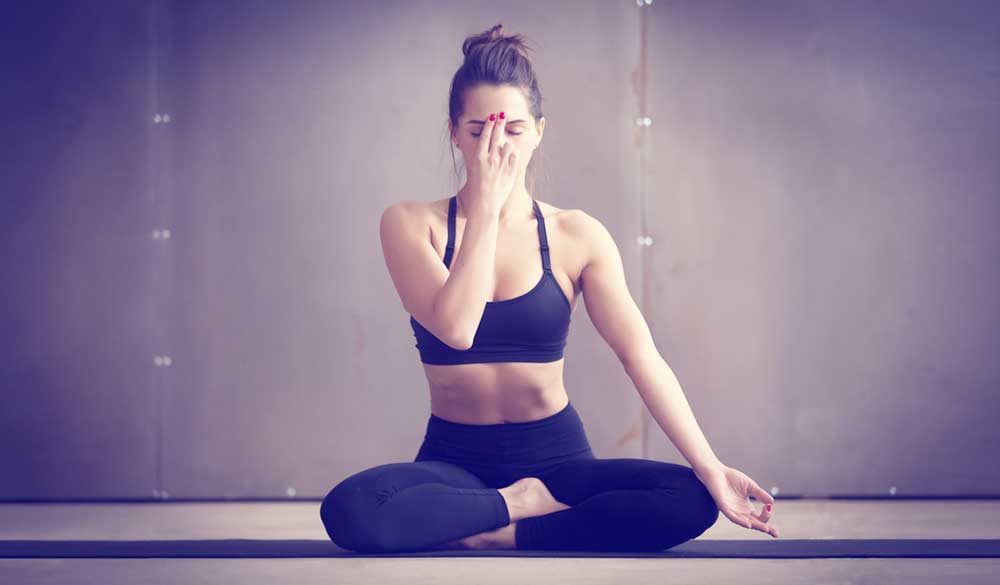Shannon Chafkin ● 2 min read
Yoga has evolved into the modern form, having first appeared around 5000 years ago. It has gained global popularity as an ancient practice that encompasses an array of general lifestyle benefits.
There has thus been an increasing number of clinical studies that have begun to uncover and place emphasis on yoga as a valuable complementary therapeutic intervention in the public health system.
Yoga has its foundation in movement, but equally central to yogic practice and its benefits is the breathing, or pranayama. As such, one of the therapeutic goals of yoga is to anatomically connect an individual with their breath and, in doing so, endeavour to alleviate related conditions.[1]
Asthma is a common chronic disease affecting about 300 million people worldwide. Asthma can be viewed as a disconnect between the thoracic and abdominal components of breathing. Typical asthmatic symptoms include wheezing, coughing, chest tightness and shortness of breath.[2,3] Recent studies have investigated the potential of yoga to relieve asthma-related problems.[4]
A 2016 Cochrane review suggests that yoga may have a beneficial effect on the symptoms and quality-of-life (QOL) in people with asthma. They found 15 randomised controlled trials that involved 1048 men and women, most of whom continued to take their usual asthma medication while participating in the studies.[2]
Five of the studies reported that yoga exercise reduced the impact of asthma on people's QOL. The research team concluded that yoga training can supplement drug therapy to achieve better control of asthma.[2]
Four other trials suggested that yoga leads to a significantly greater reduction in: airway hyperresponsivity; dose histamine needed provoke a 20% reduction in forced expiratory volume; spirometric measures; need for drug treatment; and weekly number of asthma attacks.[4]
Since bronchial asthma is an important cause of morbidity and mortality, especially in resource-limited areas where the long-term use of multiple drugs is costly. It is wise to think of an alternative way to treat such an illness with better economic safety and to avoid adverse effects of the drugs.[5]
Although many yogic practices are safe and therapeutic, some are more complex and strenuous and therefore may not be appropriate for asthmatics. It is important to point out, that some of the breathing techniques utilised with yoga postures may cause hyperventilation. This may hyper-activate the sympathetic nervous system and may be contraindicated in asthmatics.[6]
The overall evidence, however, to support yoga for asthma is significant and promising. Yoga and pranayama exercises used adjunctively with standard pharmacological treatment has significantly improved quality of life in individuals with asthma or asthma-related conditions. However, further large scale studies that measure lung function would be highly regarded.
References
- Novotny S, Kravitz L. The science of breathing. IDEA Fitness J 2007;4:36-40. [Full text]
- Yang ZY, Zhong HB, Mao C, et al. Yoga for asthma. Cochrane Review 2016. Viewed 13 June 2017, http://onlinelibrary.wiley.com/doi/10.1002/14651858.CD010346.pub2/full
- Heaney L, Menzies-Gow A. Difficult asthma (Clinical focus series), 1st ed. New Dehli: Jaypee Brothers Medical Publishers, 2013.
- Posadzki P, Ernst E. Yoga for asthma? A systematic review of randomized clinical trials. J Asthma 2011;48(6):632-639. [Abstract]
- Mekonnen D, Mossie A. Clinical effects of yoga on asthmatic patients: a preliminary clinical trial. Ethiop J Health Sci 2010; 20(2):107-112. [Full Text]
- Collins C. Yoga: Intuition, preventive medicine, and treatment. J Obstet Gynecol Neonatal Nurs 1998;27(5):563-568. [Abstract]
DISCLAIMER:
The information provided on FX Medicine is for educational and informational purposes only. The information provided on this site is not, nor is it intended to be, a substitute for professional advice or care. Please seek the advice of a qualified health care professional in the event something you have read here raises questions or concerns regarding your health.



